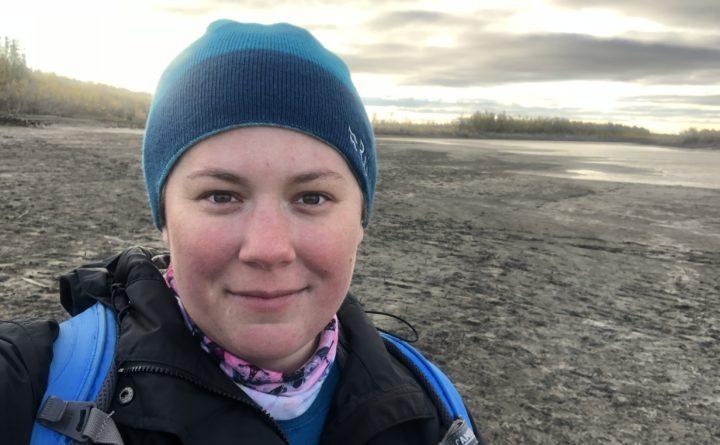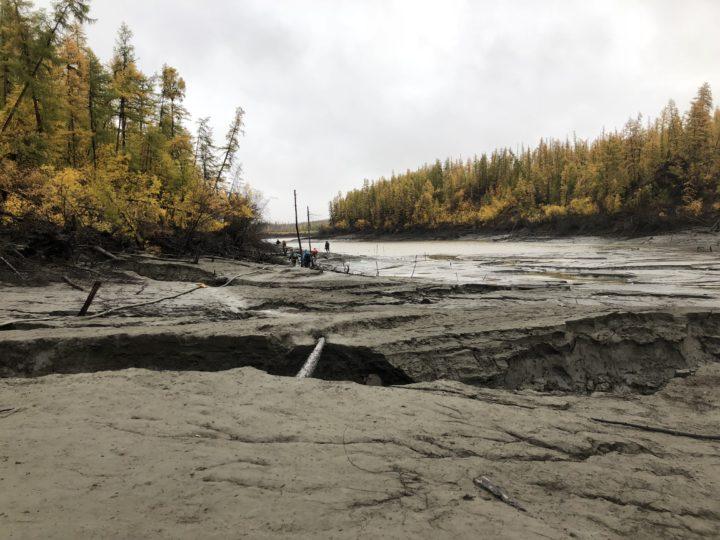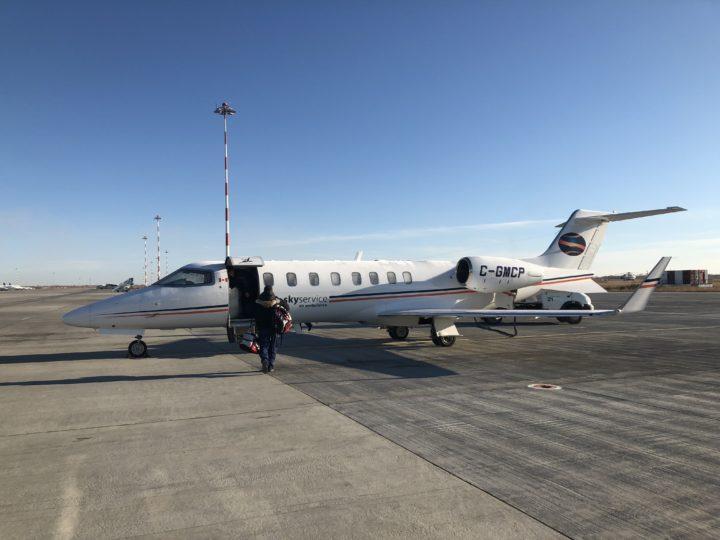University of Maine climate science professor Jacquelyn Gill knew that the chance to spend 10 days in the Siberian wilderness shooting a documentary about ice age fossils for the Discovery Channel was an opportunity she could not pass up.
The fact that her trip ended up lasting more than a month, and brought her to the brink of death in a Russian intensive care unit, was not something she could possibly have anticipated.
Gill finally returned to her home in Bangor on Oct. 1 — nearly six weeks after she left for the tiny, unfathomably remote Siberian town of Belaya Gora — and still is recovering from deep vein thrombosis (DVT) in both legs, as well as a pulmonary embolism in both lungs.
“It was the scariest thing that’s ever happened to me,” said Gill, a New England native who has lived in Bangor since 2013. “I’m just so happy to be home.”
Gill, 37, a paleoecologist who specializes in the study of climate change during and between ice ages, is no stranger to the wilderness, having done fieldwork all over the world. She’s also a media savvy scientist, as co-host of the climate change podcast Warm Regards and as one of the co-founders of March for Science, a rally held in cities around the world each April in support of science’s role in society.
She was approached over the summer by London-based company Renegade Pictures to be one of four featured scientists in a documentary, “Ice Age Fossils in the Permafrost.” The other scientists included British paleontologist Victoria Herridge, Swedish paleogeneticist Love Dalen and American evolutionary biologist Dan Fisher. The program will be jointly produced by Discovery and the BBC, and it will air on TV over the winter.
Gill quickly obtained her Russian visa and began the first of what would be many long journeys to get to the Siberian taiga, the massive boreal forest that covers the majority of Russia, Canada and Alaska.
Commercial flights from Boston to London, and then London to Moscow, took her to Yakutsk, the largest city in the vast Sakha region of Russia. From there, Gill and crew flew via small plane to Belaya Gora, a village unreachable by car on the Indigirka River that served as their base camp. From Belaya Gora, the crew every day took a three-hour boat trip, followed by another shorter boat trip, up the river to the research site: a camp where locals drill large, cave-like holes into the permafrost to look for highly valuable woolly mammoth tusks.
“The permafrost caves are like these windows into a past ecosystem — everything from mammoths to birds and grass and moths, and even a cave lion cub that was completely intact,” Gill said.
The grueling film shooting schedule meant there was little time for rest and a lot of time spent sitting, a known risk factor for developing deep vein thrombosis, or essentially blood clots in the legs.
“These were incredibly long days, where we were getting up at 6 a.m., traveling, working and then getting back to Belaya Gora at 10 p.m.,” Gill said. “No breaks, every day, for 10 days. It was pretty intense. It was also a lot of sitting.”
By the last day of shooting, Gill felt exhausted and out of breath for the entire day — which seemed odd to her, as she’s generally a very active person. Thinking she was just tapped out from the whole experience, she tried to put it out of her head — but by the time the crew got back to Belaya Gora that evening, she was feeling even worse.
The following day, as they were getting ready to board their flight back to Yakutsk, she knew something was seriously wrong.
“I was struggling with one small bag to load on the truck to take us to the plane, and I just couldn’t get enough air — and then the sides of my vision were closing in,” Gill said. “I remember thinking, ‘I am not going to die here.’”
Gill did get on the plane back to Yakutsk and miraculously survived the flight; upon landing, she was whisked away to a hospital, where CT scans and ultrasounds revealed the clots in her legs and lungs.
Gill spent six days in the intensive care unit. Fortunately, she was not fending for herself entirely; the documentary producer, Guy Pugh, remained with her during her entire hospital stay, monitoring her care and working as her de facto Russian-English translator.
“I gave my wedding ring to Guy, and then I was wheeled into this room full of very sick, very elderly people,” Gill said. “It was an extremely dark experience, and my husband [Jeremy] didn’t hear anything from me for 20 hours. He had no idea if I was alive or dead.”
She had several more brushes with death during her time in the ICU, including a dangerously high blood pressure spike, but after six days, she was well enough to go into a regular room in the hospital — itself a scary experience.
“It was night and day, because I was well cared for in the ICU, but in the regular rooms, it’s incredibly crowded. There’s no toilet paper; there’s no doors on the bathrooms; there’s no shower. I got bed bugs,” Gill said. “It was definitely bare bones.”
Finally, after two weeks, Gill was discharged from the hospital — only to have to wait nearly 10 more days in a Yakutsk hotel room for an air ambulance to take her back to the United States. Her air ambulance made four stops: Petropavlovsk, Kamchatka; Anchorage, Alaska; Saskatoon, Saskatchewan; and finally, Bangor.
Gill said she hopes by sharing her story she can raise awareness about DVT — not just the things that can cause it, but the ways by which it can be prevented in the first place. Gill credits the training program she began over the summer at Wilcox Wellness & Fitness in Bangor with making her physically healthy enough to survive.
“This has taught me to listen to your body and take deep vein thrombosis very seriously. Don’t try to power through if you’re struggling; ask for help,” said Gill, who will continue to be seen by a doctor in Bangor until she’s back to normal. “And if you want to start prioritizing your health, don’t wait. My doctors said that training over the summer probably saved my life.”
Nevertheless, she said she doesn’t regret a thing.
“Seeing these incredibly well-preserved ice age fossils and mummies in the permafrost caves was one of the most incredible experiences of my life,” she said. “Even after everything, I’m still excited to go back there.”
This story appears through a partnership with the Bangor Daily News.




